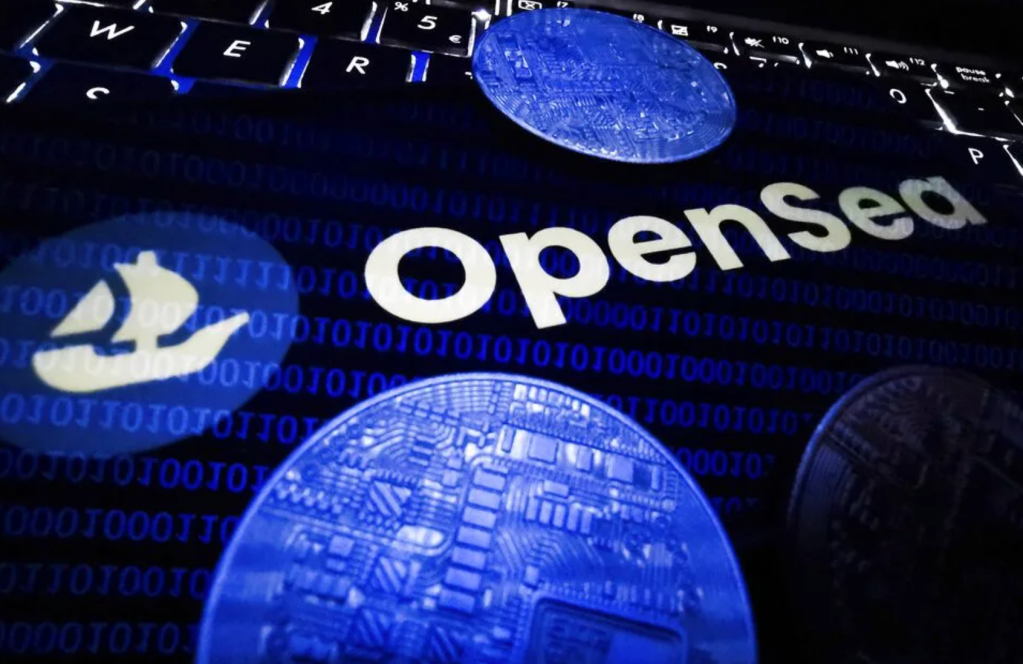
After Announcing NFT Limit, OpenSea Reverses Course Amid User Uproar
OpenSea, the major NFT marketplace, announced yesterday that it had decided to limit how many NFTs OpenSea users could create, attributing it to community feedback “about [its] creator tools,” the company’s announcement read. But following enormous pushback from creators, OpenSea reversed its decision within 24 hours.
Mega-successful projects like Bored Ape Yacht Club and similar PFP collections have totaled around 10,000 NFTs, but with this update, OpenSea decided to limit each user to five collections numbering no more than 50 NFTs (or 250 in total), effective immediately. OpenSea users soon began to complain, as they had been given no prior warning in order to plan around this change that impacted several projects that were already underway.
One OpenSea user going by the name HOLOHEADZ on Twitter had been steadily minting NFTs over the course of several months from a collection that is supposed to number 1,000 NFTs. At the time of OpenSea’s announcement, they had minted only 182 NFTs so far. “I’ve spent many months preparing the assets I then would have used for the collection,” HOLOHEADZ wrote in a DM to ARTnews. “This is a huge obstacle.”
Several other NFT creators were in the same boat—stuck with assets they had spent months working on that they could no longer deploy. And they didn’t know why. OpenSea’s did not provide an explanation for this update beyond addressing feedback from the community.
Some users, including HOLOHEADZ, speculated that maybe OpenSea wanted creators to create collections that emphasized rarity instead of quantity, while others wondered if it had to do with a technical issue. (Despite being valued at $13.3 billion, OpenSea’s site frequently crashes, so limiting the load could in theory ease the pressure on its technical infrastructure.)
Only after it announced that it would reverse its decision to limit the amount of NFTs created did OpenSea say it had initially done so as a way to prevent theft. “Every decision we make, we make with our creators in mind,” OpenSea’s January 28 reversal announcement reads. “We originally built our shared storefront contract to make it easy for creators to onboard into the space. However, we’ve recently seen misuse of this feature increase exponentially. Over 80% of the items created with this tool were plagiarized works, fake collections, and spam.”
The decision to enact limits also followed OpenSea’s creation of a more robust customer service program, using a portion of the $300 million it had raised in Series C funding. Users had continually complained that there wasn’t enough staff to handle support tickets. And some observers have gone as far to suggest that OpenSea’s hastily announced NFT-limit decision (and its subsequent reversal) was financially motivated: a half-hearted attempt to address the rampant proliferation of “plagiarized works, fake collections, and spam” that it has long neglected.
Pepi Martinez, a blockchain engineer who previously worked for NewKino, a digital production startup, said it hadn’t addressed the problem as it developed because it was making huge amounts of money in fees—in the tens of millions—from NFTs being quickly minted and traded. “OpenSea has the same vulnerability as Facebook of not being able to verify whether someone should create on their platforms or not,” Martinez said. “Because OpenSea wants this trading volume they don’t care if the art is stolen or not, just like how Facebook won’t delist racist content because they want clicks.” In essence, Martinez said the company “can say, ‘Hey, we tried something but nothing is perfect, we will try to come up with something.’”
As the controversy was unfolding, OpenSea users pointed out that instead of limiting the number of NFTs created, the company could have addressed theft and spam differently so as not to control the scope of their collections. This includes OpenSea verifying all legitimate accounts created on its platform, not just high-profile brands and artists, as well as using a machine-learning algorithm to scan images and their metadata on blockchains and third-party marketplaces for possible plagiarism and copyright infringement.
Such a technology already exists in the NFT space. DeviantArt, an online art gallery, put in place an algorithm last year to identify NFT theft, called the DeviantArt Protect Project. The program scans some 4 million NFTs each week, and since September, it has sent over 90,000 alerts to DeviantArt users flagging potential infringement in their NFTs, resulting in tens of thousands of successful takedown requests.
But many users are just simply baffled. One OpenSea user going by BoY, a member of the anonymous Books of Ye NFT project, wondered what the company was doing with large investments it has received. “OpenSea has an enormous war chest from some of the best tech VCs in the world. What are they doing?” he asked, adding that if OpenSea continued down its current path of being disconnected from its users’ needs, there might be a mass exodus from the platform. “We have other avenues, other marketplaces where we can distribute our assets. We don’t have our back against the wall, fortunately.”
This content was originally published here.


